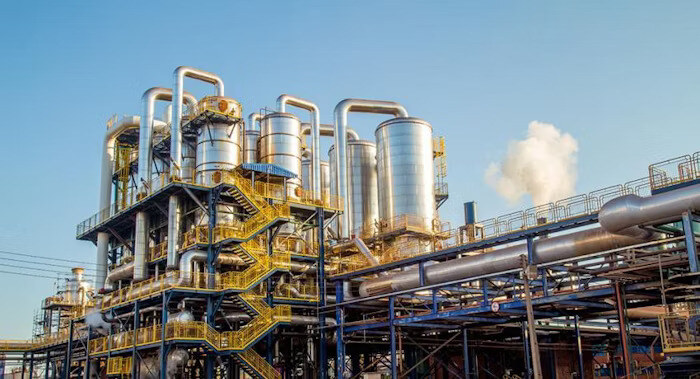
Improving Manufacturing Overall Equipment Effectiveness (OEE) with a CMMS
Looking to improve your Overall Equipment Effectiveness (OEE)? Here's how Maintenance Connection can help make that happen.
Solutions
Workplace Management Solutions
Real Estate Management Solutions
Maintenance Management Solutions
Energy Management Solutions
Engineering Document Management Solutions
Asset Management Solutions
Automate campus scheduling for classes, meetings, and exams with our EMS software.
Plan and manage conferences effortlessly with EMS software to impress guests and streamline operations.
Boost workplace flexibility and maximize space use with seamless desk and room booking.
Organize workplace or campus events smoothly, creating memorable experiences.
Optimize workspace, manage allocations efficiently, and reduce costs with our space management solutions.
Deliver projects on time and within budget by improving communication, collaboration, and efficiency with our software.
Streamline lease accounting for ASC 842, IFRS, and GASB compliance.
Manage leases efficiently by tracking key dates, analyzing costs, and ensuring compliance.
Centralize data and analytics for better insights, faster negotiations, and revenue growth.
Centralize facility and asset maintenance, automate work orders, and ensure compliance with our CMMS software.
Extend asset life, reduce downtime, and prevent costly repairs with data-driven monitoring.
Prevent equipment failures and extend asset life by detecting and addressing issues early.
Make sustainable, cost-efficient energy decisions by monitoring and optimizing power consumption.
Remotely monitor and control equipment with real-time data to predict issues, boost efficiency, and reduce downtime.
Easily share and collaborate on documents, creating a single source of truth for engineers and contractors.
Manage and analyze assets across their lifecycle to schedule maintenance, reduce downtime, and extend lifespan.
Improve visibility, automate work orders, and ensure compliance for efficient facility and asset management.
Resources
Browse our full library of resources all in one place, including webinars, whitepapers, podcast episodes, and more.
Support
Looking for access to technical support, best practices, helpful videos, or training tools? You’ve come to the right place.
About Accruent
Get the latest information on Accruent, our solutions, events, and the company at large.

Want to overcome recurring pain points and reach goals like decreased downtime, increased productivity and maximized transparency? Then you need a CMMS.
A reactive maintenance strategy is one that focuses on fixing equipment after it breaks down or fails.
Reactive maintenance was the predominant strategy for many years, but as new software and technology tools became available, proactive approaches such as preventive maintenance (PM) and predictive maintenance became more prevalent. Most maintenance programs today are some combination of reactive and proactive.
While the ideal ratio of reactive to proactive maintenance varies based on many factors, there are 5 primary consequences of reactive maintenance strategies that are compelling reasons for companies to continue to shift toward more proactive approaches:
By looking at each of these in greater detail, it becomes easier to understand the value of preventive and predictive maintenance and how they can benefit manufacturing companies.
The Chemical Safety Board (CSB) identified non-existent or poor preventive maintenance programs as a recurring root cause in their incident investigations. The CSB has identified instances where a robust preventive maintenance program would have identified compromised equipment which led to the incident.
Reactive maintenance is about being in a constant response mode. This “run-to-failure” approach means the failures will occur. In certain scenarios, these failures can jeopardize employee and equipment safety. Through regular preventive maintenance programs, equipment failure situations with a high potential to impact safety can be identified and corrected prior to an incident. For manufacturers, the investment and effort associated with preventive maintenance is minimal compared to the costs associated with a single major safety incident.
One of the primary goals of manufacturing maintenance programs is to limit unplanned downtime. Yet, in the manufacturing industry, over $50 billion is lost annually due to unplanned downtime, according to Asset Performance Management: Blazing a Better Path to Operational Excellence.
According to a 2018 maintenance study, the leading causes of unscheduled downtime are aging equipment (44%), followed by operator error (16%) and lack of time (15%).
Preventive maintenance programs are focused on regularly schedule maintenance based on calendar time or in-service utilization that prevents the downtime event. Reactive maintenance strategies allow downtime events to occur. As a result, manufacturers who use reactive strategies have a much higher frequency and longer durations of unplanned downtime than those who employ preventive or predictive maintenance approaches.
The costs of unplanned downtime are comprised of numerous factors, including:
Unplanned downtime is disruptive to operations and avoidance or prevention is a logical “best practice” strategy.
One often overlooked consequence of a reactive maintenance strategy is its contribution to maintenance labor inefficiency. It is very difficult to plan work schedules when unknown maintenance events priority. The maintenance planner/scheduler job can be extremely challenging when unplanned downtime events frequently interrupt scheduled work. They often must re-prioritize and re-assign work orders around unplanned downtime, which increases under the reactive maintenance model.
The randomness of equipment outages under the reactive maintenance approach can also adversely affect technician availability and technician productivity. When a technician who has gathered tools and reviewed the documentation associated with a conveyor belt work order is suddenly pulled off to handle an emergency outage for other equipment, that situation can create inefficiency. It can also delay meaningful progress on the conveyor belt work order, which can have a cascade effect of slowing work order completions. Under preventive maintenance programs, downtime events may of course still occur, but typically not with the same frequency as they do with reactive maintenance strategies.
Many organizations committed to preventive maintenance have separate PM teams that are dedicated to the regular, planned maintenance activities. The focus of these resources on these activities means that, except in emergency maintenance situations, progress is being made on planned maintenance activities that can help avoid the downtime events that impact maintenance labor efficiency. A CMMS software solution like Maintenance Connection makes these processes accessible and easy to control thereby alleviating unexpected downtime and limiting the impact to your organization's ROI.
Manufacturing companies invest significant amounts of money in their physical assets. Maximizing production requires equipment to run optimally and last for the duration of its asset life. When equipment is not properly maintained, the lifespan will be shortened. This is a lesson that all of us who own automobiles likely fully understand. If we have a car that we never change the oil in, or never replace the filters, hoses or tires on, we know our vehicle will wear out in a shorter time frame than one that is maintained properly. A preventive maintenance example for a vehicle is to change the oil at regular intervals. Industrial manufacturing equipment is similar in that it needs regular care to maximize its lifespan.
Reactive maintenance programs inherently do not encourage these regular maintenance activities, the result being that equipment may not operate optimally and tends to have a shorter lifespan.
Some manufacturers argue that reactive maintenance strategies are less expensive than preventive maintenance programs. For a real comparison, this argument must bring in the costs of downtime.
An ISA article notes that downtime costs every factory at least 5% of its productive capacity—with many losing up to 20%. However, the problem could be even worse, as an estimated 80% of industrial facilities are unable to accurately estimate their total downtime cost (TDC). Many of these facilities are underestimating their downtime by 200-300% according to downtime consultants.
“The cost of unplanned downtime can be devastating, ranging from an estimated $10,000 to $250,000 per hour for industrial plants”, from Asset Performance Management: Blazing a Better Path to Operational Excellence.
The cost of a single downtime event can easily run hundreds of thousands of dollars per hour—which could fund a preventive maintenance program. Reactive maintenance activities often result in labor overtime, expedited parts and other contributors that can drive up costs significantly in the reactive maintenance scenario when compared to preventive maintenance.
Given the negative consequences of the reactive maintenance model, why would manufacturing companies choose to employ it? First, it is easy; it does not require planning. Second, there is often a perception that it is cheaper. This is somewhat of a misperception because while the upfront maintenance costs might be lower than a preventive maintenance program, one downtime incident can overshadow that cost savings.
Manufacturers can take steps to solve the unplanned downtime challenge and move from reactive to proactive maintenance.
A preventive maintenance approach improves safety, reduces downtime, increases labor efficiency, extends equipment life and lowers overall maintenance costs. Continuing to shift reactive maintenance activities to preventive maintenance programs will drive manufacturers toward maximum production and long-term operational success.
Get the details with Accruent’s Preventive vs. Reactive Maintenance Infographic
Optimize your manufacturing performance through proactive maintenance. Empower your workforce with asset intelligence and the ability to manage work orders, organize and execute preventive maintenance. Reduce downtime and predict when assets need maintenance, and manage enterprise assets and equipment inventory. Request a Maintenance Connection demo today.
Looking to improve your Overall Equipment Effectiveness (OEE)? Here's how Maintenance Connection can help make that happen.
Explore effective facility management tips for the beverage industry with Accruent. Learn to reduce asset downtime and enhance operational efficiency.
Identify the role of planned downtime and how it creates challenges for manufacturing maintenance organizations and explore how to minimize those ...
Subscribe to stay up to date with our latest news, resources and best practices